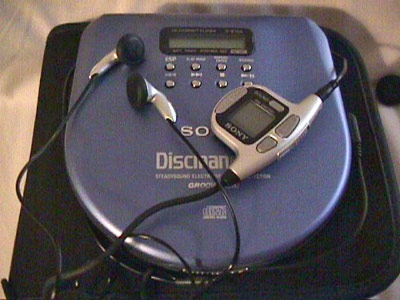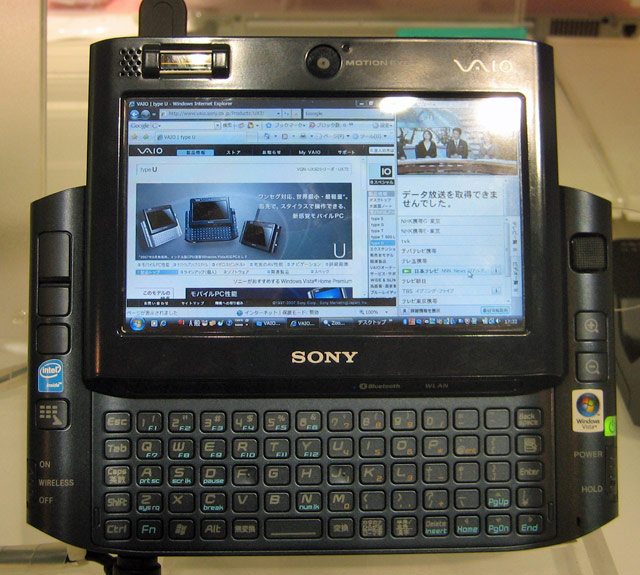How Sony lost its way, starting with software
 Growing up as a gadget nerd in the 1990s, there was no brand as exciting as Sony. Yes, Apple made great computers, and that’s what we used. But almost everything else, I wanted from Sony.
Growing up as a gadget nerd in the 1990s, there was no brand as exciting as Sony. Yes, Apple made great computers, and that’s what we used. But almost everything else, I wanted from Sony.
Now, 20 years later, it’s interesting to look back at how Sony thrived, made some wrong turns, and eventually lost its way — now far behind companies like Apple in consumer electronics mindshare and sales.
Sony has had plenty of problems over the years, including its corporate sprawl and lack of cooperation between units. (Did you know that one of its most successful businesses today is life insurance?)
But in terms of its gadgets themselves, one of Sony’s biggest problems has long been its failure to make great software that runs its great-looking hardware.
In the days of the Discman, that didn’t matter very much — as long as the laser read the CD and the machine didn’t skip, that’s all that mattered. (Plus: Mega Bass!) But about ten years ago, the focus of consumer electronics devices shifted to what was on their screen, how they obtained and organized large libraries of digital media, and how they connected to the Internet. Having great software became just as important as having great hardware. And that’s where Sony lost its edge.
In the early 1990s, my father bought me my first Sony product: An AM/FM/cassette Walkman. I was the first of my friends to have a Walkman with a digital tuner and LCD display. This meant I could program preset stations to flip between — I didn’t have to fiddle with tuning dials to get perfect reception, I just had to tap a button. It was awesome. And in hindsight, it was an early glimpse at how software could totally change consumer electronics.
The coolest Sony product I owned, relative to its time, was the Discman I bought in Hong Kong in 1998. It was unbelievably thin and sculpted, with a clip-on remote control, silver earbuds, and something like 2 minutes of “ESP2” anti-skip protection — impressive at the time. (That’s a photo of it above, shot with my Sony Mavica digital camera, which used floppy disks for storage and had a 10X optical zoom. It was a beast, but at the time, it was also amazing.)
But a few years later, the digital music game changed, and Sony was no longer driving progress. As the world caught on to MP3s, Sony kept pushing its own format called ATRAC, and terrible software to manage your music library and devices. Meanwhile, Apple had just introduced the iPod and iTunes ecosystem, which eventually took off and made Sony look like an also-ran.
A decade later, the iPod’s scroll wheel UI, iconic design, fun name, and great ads get a lot of credit for its success. But I think the simple and free iTunes software was just as important: You could very easily rip CDs, organize MP3s, and sync them to an iPod. It was elegant enough for anyone to use, and Sony and everyone else didn’t really have anything like it.
It’s not just music where Sony fell down on gadget software.
In December 2007, a few months after the iPhone first launched, I visited Tokyo, hoping to see some mind-blowing electronics. And at the Sony showroom in Ginza, I did see some pretty crazy stuff — a dancing music player called the Rolly, some incredible audio-recording equipment, and some very neat looking Vaio PCs.
Perhaps the coolest thing was this handheld gadget (below), which looked like what might have happened if a BlackBerry and a laptop had a baby. It had a little thumb keyboard, a front-facing camera for video chats, wireless Internet, and was streaming live TV. For a second, I wanted one. But look at the software on this tiny thing: It was running the full Windows Vista Home Premium!
Even with a stylus and a surgeon’s precision, how could you have any fun using that? It would have been like Apple trying to power the iPod touch with a full, big-screen version of Mac OS X. Terrible idea!

Anyway, these are just a couple of examples.
Sony’s problems go much deeper. Its troubled partnership with Ericsson set it back when the smartphone revolution was taking off. Its inability to collaborate between multiple divisions was a huge handicap. In a dream world, Sony would have been able to take its high-end music, PC, camera, and gaming divisions and make something way better than the iPhone or iPad.
But one big reason why they didn’t — and haven’t so far — is that Sony has never designed software as good as its hardware.
Today, Sony seems to be increasingly leaning on Google to provide that. But I’m not sure it can be outsourced. So it’s hard to see Sony reinventing itself without a new, top-to-bottom mission to make great software.
(Credit where it’s due: John Gruber and Dan Benjamin spoke at length about Sony’s decline on a recent episode of the Talk Show podcast, which got me looking into Sony’s last-20-year financial history and digging through my old travel photos.)
Related: The rise and decline of Sony: A 20-year view and How does Sony make money? Life insurance!

Check out my new site: The New Consumer, a publication about how and why people spend their time and money.

